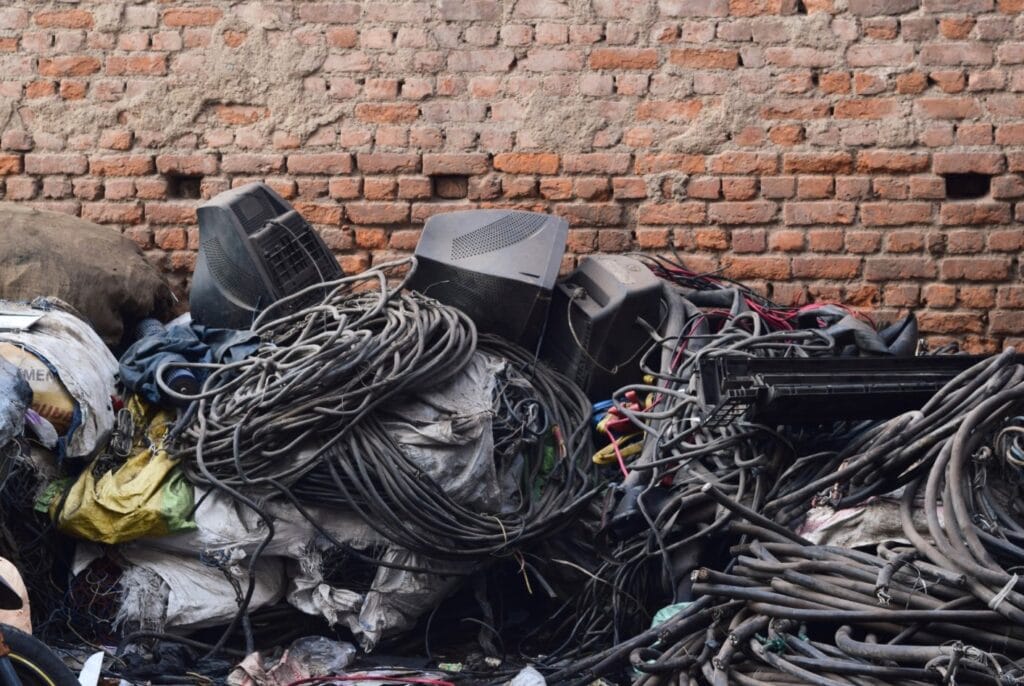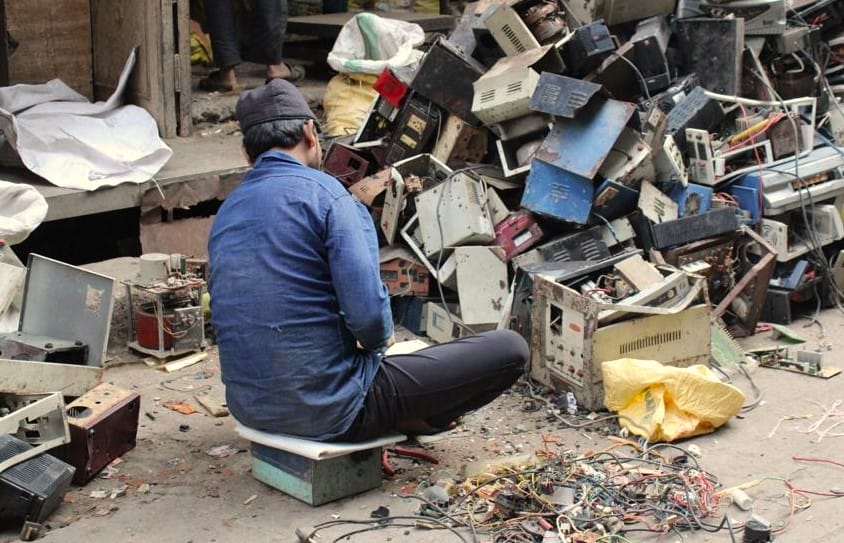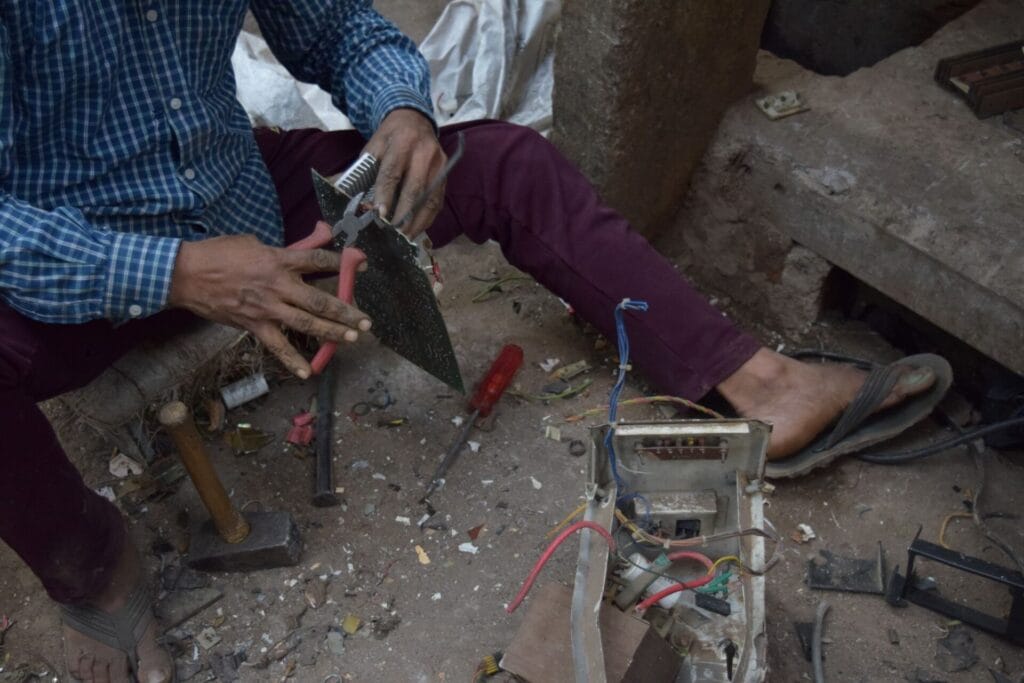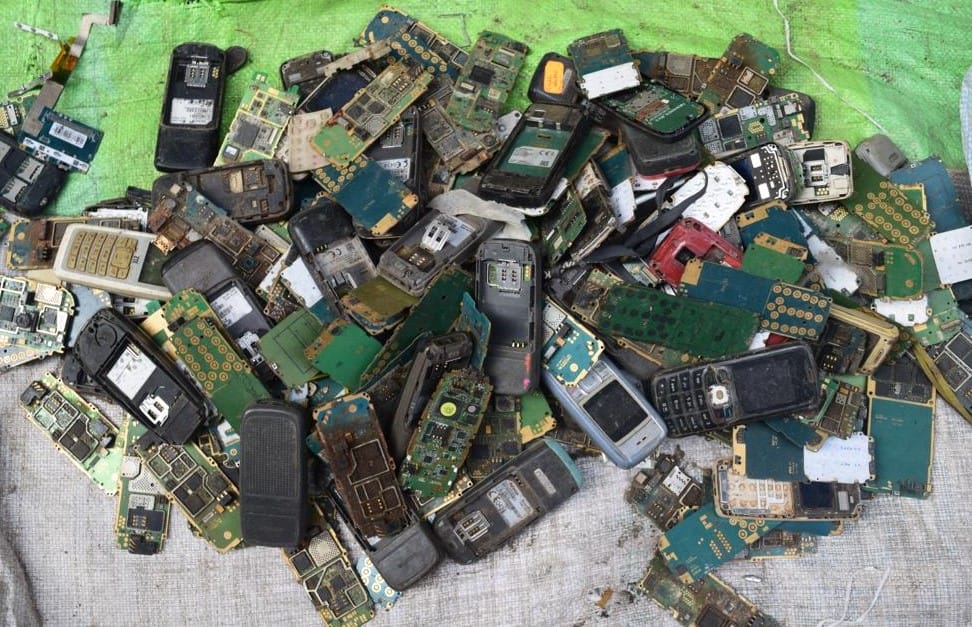‘Galli Number 4’, Seelampur in New Delhi is well-known for being India’s largest e-waste market.
Birds fly over a sprawling stream of dirty, black water overflowing with a deluge of plastic, and metallic waste. Children sift through the refuse with their small hands delicately exploring the piles of garbage hoping to find something of worth that could fetch them a few rupees.
Narrow lanes and footpaths are riddled with discarded mobile phones, defunct computer supplements, broken guts of a circuit board, cuts of optical fibres, and various other dead and rejected electronics.
This suburb in Shahadara district of east Delhi, is prominently known as a “toxic sink,” where electronic waste or e-waste from all over the world is dismantled and processed.
What is e-waste?
According to the definition by the World Health Organization, e-waste are the electrical and electronic devices that are discarded after they break or become obsolete. Discarded computers, parts of computers, mobile phones, electrical appliances, white goods (household appliances such as television, refridgerator, air conditioner and so on) and medical equipment are considered as e-waste.
According to WHO, “Every year, millions of tonnes of e-waste are recycled using environmentally unsound techniques and are likely stored in homes and warehouses, dumped, exported or recycled under inferior conditions. E-waste can become a threat to the environment and to human health if they are not treated, disposed of, and recycled appropriately.
When e-waste is treated using inferior methods, it can release as many as 1000 different chemical substances into the environment, including harmful neurotoxicants such as lead. Pregnant women and children are particularly vulnerable due to their unique pathways of exposure and their developmental status.

The International Labour Organization (ILO) estimates that 16.5 million children were working in the industrial sector in 2020, of which waste processing is a subsector (4).”
Livelihoods dependent on e-waste
People in this neighbourhood depend on the scraps of electronic waste discarded by the consumers of the tech world, which moves on and moves fast with gadgets and newer innovations. Within months, new smartphones are launched in the market, and the old ones are found in large, informal e-waste recycling markets like Seelampur.
The workers do several jobs such as separating the parts of the discarded equipments, sorting and packing and loading for recycling. They often work with their bare hands without any protective gear. The presence of lead in many of these appliances is considered to be a serious health risk.
E-waste generation in India
According to the Global E-waste Monitor 2020 report, India with 3.2 million tonnes, is the third largest contributor to the global e-waste. Reports have suggested that about 95% of India’s e-waste continues to be recycled in the informal sector. Nearly a quarter of that is found in Seelampur.
| Financial Year | Generation (Tonnes) |
| 2017-18 | 7,08,445.00 |
| 2018-19 | 7,71,215.00 |
| 2019-20 | 10,14,961.21 |
| 2020-21 | 13,46,496.31 |
| 2021-22 | 16,01,155.36 |
The market employs close to 50,000 informal workers making a living out of extracting valuable metals from the massive amount of e-waste that is dumped there on a day-to-day basis for a nominal pay.

The streets of Seelampur are congested and one can see e-waste lying about. Obsolete metal parts, defunct batteries, wires and so on.
Read more: 50000 workers face serious health risks in illegal e-waste processing units in Delhi
Need to regulate e-waste management
A 2019 report cited inadequate regulatory design and framework, as well as lack of transparency on e-waste by the government agencies. Workers — underpaid and unprotected — often work in dismal condition.

Seelampur e-waste market has thousands of people who are involved in salvaging electronic gadgets work. They work without any safety gears and do not take protective measures. They are paid poorly but have no option but to continue this work for the sake of livelihood.
The crumbling, unregulated infrastructure housing toxic fumes and materials generated from e-waste, is a critical health hazard. It is also environmentally unsustainable, contaminating water, soil, and air.

It is crucial to support these workers so that they work in better conditions, even if the industry is informal and unorganised.
Note: The author is one of six selected Fellows for the “Citizen Matters – Urban Environmental Reporting Fellowship 2023” focusing on the Delhi-NCR region. This piece was produced as part of her work under the Fellowship.




